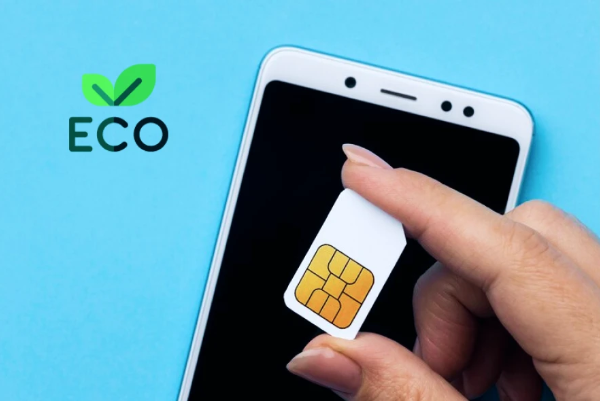
Today, communication has developed to advanced technology as the need to produce hardware for communication infrastructure has caused an increase in e-waste and carbon footprint. Operating such infrastructure also consumes a lot of energy and resources.
However, the practice of green communication can reduce e-waste and carbon gas and enable energy-efficient communication.
This Green communication helps to use effective communication systems and contributes to an eco-friendly environment.
The Impact of Traditional Communication Systems on the Environment
Carbon emissions and environmental degradation are significant factors contributing to traditional communication systems’ dependence on fossil fuels and nonrenewable resources. Here are a few noticeable disadvantages of these systems:
- Traditional systems consume a lot of energy, causing greenhouse gas emissions and global warming.
- As technology advances, obsolete devices become obsolete, resulting in electronic waste accumulation. In addition to releasing toxic chemicals into the soil and water, e-waste threatens the health of humans and animals.
- Communication devices require a vast amount of natural resources, including rare minerals, which contribute to resource depletion.
Revolutionizing Communication: The Eco-Friendly Advantages of SIMless Calls
Communication systems have developed significantly, resulting in lower consumption of nonrenewable resources and natural gases. One of the alternatives for the eco-friendly communication system is SIMless calls. Why use SIM cards for communication when there is no need to use one? Resulting in the reduction of the carbon footprint on the environment. Also contributing to an eco-friendly communication system.
Not only that, but it is much more cost-effective, reliable, and better than the traditional communication system.
This results in minimizing electronic waste, which has a negative impact on the ecosystem, and preserving valuable earth’s natural resources.
The Carbon Footprint of Traditional Communication
From the production of traditional communication devices to the old-fashioned ones, which are out of use, has some negative environmental impact. Now, let’s see how traditional communication methods result in carbon emissions.
Even the production of a small SIM Card uses natural resources. For production and refining, these raw natural resources emit high carbon gasses, and the use of plastic material for creating SIM cards results in non-biodegradable products.
When unused traditional devices are kept, they become electronic waste that is non-eco-friendly.
Around 2.7% of the total generated global electronic waste is recycled every year (59.4 metric tons in 2020 only).
Communication devices that are out of use are a leading factor for electronic waste. Also, resources used for printed documents enable carbon footprints. These e-waste are harmful to the environment and release harmful chemicals into nature’s land, water, and atmosphere. Leading to the degradation of the ecosystem.
The use of renewable resources for communication infrastructure is a key to sustainable alternative solutions. The use of solar-powered communication networks and efficient hardware significantly helps to decrease carbon emissions and energy consumption.
Understanding SIMless Calls
SIMless calls have virtual numbers you can use on multiple devices, including Laptops, desktops, and smartphones. All you need to have access to the Internet, which converts your voice signal to a digital data packet and transmits it over to the Internet
By using SIMless calls, you will contribute to energy-efficient communication also, with the cloud, data center, and virtual solutions, you don’t need to operate multiple hardware.
Using an app and virtual number helps to lower e-waste, unlike traditional communication systems that need physical devices. With the benefits of the digital alternative, you can replace a paper-based communication system to reduce your carbon footprint, and power management features like sleep mode and auto turn-off enable efficient energy consumption, too.
How SIMless Calls Reduce Carbon Footprint
To reduce greenhouse gas emissions, SIMless communication plays a vital role in efficient energy consumption and low carbon footprint. This factor allows SIMless to reduce its carbon footprint and make it sustainable:
- Dedicated hardware: Traditional communication releases more carbon footprints as they need dedicated hardware to operate.
- Energy efficiency: when there is no need for dedicated hardware or devices, SIMless calls run with low-powered gadgets.
- Low paper usage: Attending meetings and communicating virtually eliminates the need to travel, reducing transportation carbon emissions and fuel usage.
- Scalability: In SIMless calls, you can scale your network without impacting the environment. This is not possible with the traditional method.
Now, we know SIMless calls not only positively impact our environment by reducing carbon house gas but also enable us to save resources and Power consumption.
Challenges and Considerations
SIMless calls have lots of benefits than challenges. They are best not only for reducing carbon footprints in the communication industry but also for improving the overall communication system.
- Needs Internet connection: Without an Internet connection, SIMless calls are not possible, but you can use mobile data service in such cases.
- Resources for SIMless calls: Even so, SIMless calls don’t use more resources than traditional calls. It doesn’t mean they won’t use any resources, but the resource usage is managed.
- Dispose of old or unused devices: When you use SIMless calls, then those unused devices will be a waste and need to be disposed of, causing an increase in e-waste. Eventually, it will reduce such waste positively in the future.
This type of eco-friendly communication system is not only sustainable and efficient but also cost-effective for businesses and individuals, also contributing to establishing a better environmental ecosystem.
Preserving natural resources and the habitat of animals and reducing the production of e-waste by using SIMless communication is a must.
Future Prospects
There are lots of green communication technologies that have been developed for sustainable and eco-friendly communication, from natural design to the efficient use of resources. Some of them are
- low-energy-powered devices. The reduction of energy usage and emissions from communication devices and the protocols they utilize are additional facets of eco-friendly communications.
Using energy-efficient parts and materials and adding power-saving modes and features, low-power gadgets can run for extended periods of time without recharging.
- Network design for efficient energy: One of the most important components of eco-friendly communications is to optimize the network architecture and operation to minimize energy consumption and waste.
- E-waste management: Technologies like cloud telephony and VoIP need a lot fewer resources, which also support both audio and video calls because everything is kept in the cloud. This enables companies to reduce the amount of supplies they use and improve their sustainability.
VoIP systems reduce the requirement for physical hardware by storing everything on the cloud, which means a reduction of e-waste. Not only that, but firms can enhance their flexibility with the latest communication technology while reducing their environmental impact.
Individual and Corporate Responsibility
Not only is SIMless communication better for business, but excellent for individuals, too.
If you want to use energy-efficient and better communication technology, then SIMless enables you to use it by promoting positive, eco-friendly communication practices.
It also allows users to connect remotely while using less energy consumption and reducing e-waste. If You are willing to be part of such communication, then you must use a SIMless or virtual number communication system.
Businesses can think about how communication network systems affect the environment. Also, to reduce carbon footprint and advance to a sustainable future by using green communication in practice, such as energy-efficient technology, renewable energy sources, and careful e-waste management as corporate social responsibility.
Conclusion
In conclusion, If we want to reduce our dependence on non-renewable resources, then we should practice Green or eco-friendly communication. It not only helps to manage e-waste production but reduces it in a sustainable way, making a positive environmental impact.
For businesses, it is cost-effective, reliable, and energy-efficient, with a reduction in e-waste and developing company loyalty through sustainable communication and reducing carbon footprint.



















